The Deliverance Men part two
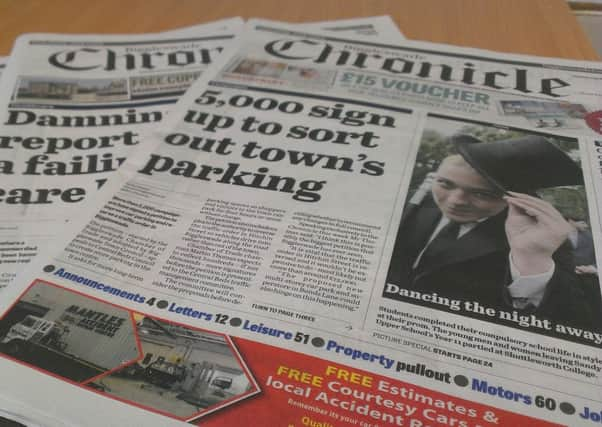

“I joined His Majesty’s Service in August 1942” says Len. “I came from a large family. My parents Lucy and Alfred had ten children but two of my sisters died – one when she was 10 and the other at 14. That left four girls and four boys.
“My eldest brother Stanley didn’t go into the services as he worked with my father in the market gardening business which was a reserved occupation, but my other two brothers, Robert and Ronald went into service. Bob didn’t leave his barracks in Surrey due to having perforated eardrums but Ronald ended up firing the heavy guns across the Channel.”
Advertisement
Hide AdAdvertisement
Hide AdLen joined the army at the age of 18 and had just bought a new bicycle when he had to report to Nelson Barracks in Norwich, originally built for the old cavalry.
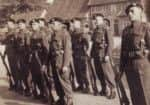

“We had to sleep on the floor where the horses used to stand” said Len. “I remember the sergeant bellowing at us: ‘Get yourself a palliasse!’ We had to fill our own bag with straw to sleep on. I had never left home before so you can imagine what it was like!”
The sergeant then handed out overcoats but Len was given a woman’s land army jacket as the army was so short of clothing. He returned it and it was exchanged, only for the sergeant to then simply give it to the man behind.
They were told they would be at the barracks for two weeks and Len was put into the Royal Norfolk Regiment in Kent who were about to leave for Doncaster Race Course travelling along the Great North Road. Len cycled all the way home and back to visit his family and then took the train up to Yorkshire. Despite warnings from his father that he wouldn’t see the bicycle again if he didn’t leave it behind, Len paid for it to be sent home on the train and later had a letter to say his father had received it safely.
Advertisement
Hide AdAdvertisement
Hide AdWhen he got to the Britannia Barracks, Len volunteered for the 15th/19th Kings’ Royal Hussars who at that time were forming the Reconnaissance Corps.


“They selected me out for the troop to work at a private garage for ten weeks vehicle training. I only knew about bicycles so I learned a lot!” says Len.
Len volunteered and was accepted for the Reconnaissance Corps. They had one landing craft and were trained to use it off the coast of Norway, with further physical training in the Scottish Islands, marching up and down mountains within a strict time limit.
Len recalls: “Just before D-Day, we had to move down to Southampton. I remember D-Day morning well. Everything had been waterproofed. We then had a very rough crossing over the Channel. When we first tried to land, we were nowhere near the beach. Then the second time we managed it. Our major got off the landing craft first and a sniper in the church tower shot him in the leg. We put a tourniquet on it and managed to get him into the top bunk of an ambulance but he died.”
Advertisement
Hide AdAdvertisement
Hide AdLen and his men were told to take up positions in a cornfield but an officer/lieutenant accidentally gave their positions away by coming up in a land rover so they were forced to move.
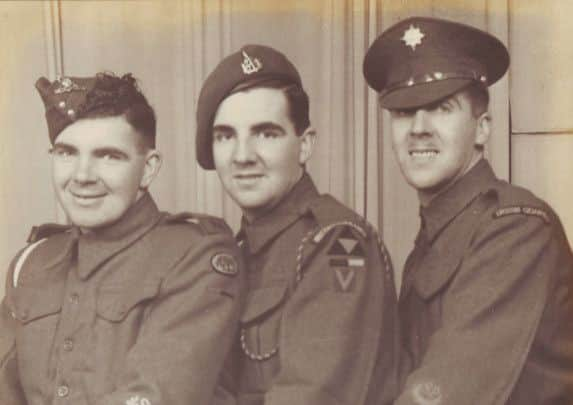

The corps then made their way to Tinchebray. There were four troopers – Wilkinson, Storah and Robinson, and Len, with their sergeant, Bill Rickard and equipment that included a 6lb anti-tank gun.
It was while he was in Tinchebray, that a German officer surrendered to him. “He spoke better English than I did!” Len recalls.
Len confiscated the German’s two daggers and a pistol but later had to throw the pistol overboard when he was coming home as having an illicit fireman meant that all leave was cancelled.
Advertisement
Hide AdAdvertisement
Hide Ad“I gave one of the daggers away and kept the other” says Len.
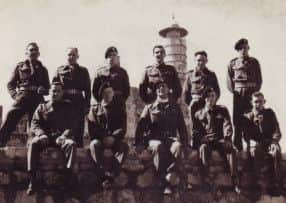

“After the 1000 bomber raid with wave after wave of bombing, the thing I remember was having to drive through all the rubble. It was terrible really” says Len.
He can also recall having to pull the corpses of horses and cattle out of bombed out sheds and stables. The war dead would then be put inside what was left of the building for later burial.
The spectre of death was constantly hovering over them.
Joining forces with the American Reconaissance Corps, Len can recall proceeding with two armoured cars that were on lead patrol using the ‘leapfrog’ method when they came across a German tank. Len’s corps took shelter in a nearby ditch.
Advertisement
Hide AdAdvertisement
Hide AdInitially Len was with his three comrades but felt uneasy so asked for permission to join the sergeant which was given. Just after moving, a shell hit the other three troopers and killed them. If Len had stayed there, he would most certainly have died also.
“I remember that one of those men had three young boys at home” says Len. “Their families wouldn’t have been told exactly how they died but if any of those soldiers’ remaining family would like to get in touch with me, I would be happy to tell them about what happened that day.”
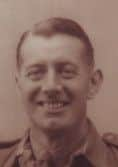

Len managed to escape with some burning shrapnel in his leg and the American Reconnaissance Corps took him to a local field hospital which shipped him back to England.
Because he had been re-dressed in an American uniform, he was sent to Salisbury Hospital which was specifically for US casualties. He spent three weeks there being treated.
Advertisement
Hide AdAdvertisement
Hide AdLen says: “They really looked after me. I was given a Purple Heart (for courage) because they thought I was American. The shrapnel was on the right hand side of my spine but some of it later moved.” Len still has shrapnel inside him to this day.
After he explained that he wasn’t an American citizen and had swapped the Purple Heart for a Bible, Len was transferred to Tower Hospital in Salisbury for another three weeks by which time he had recovered enough to be allowed out on a month’s leave. Following this, he volunteered to rejoin his regiment in France.
Len went to Ardennes, then to Holland. “There was quite a bit of snow and we had to do patrols over the River Maas wearing white uniforms for camouflage.”
Moving on to Marseilles, Len then took a troop ship to Alexandra and Tel Aviv. He was based at the Suez Canal, and as the army of occupation, went on various tours of Egypt. His sergeant Bill Rickard was with him for a number of years.
Advertisement
Hide AdAdvertisement
Hide Ad“When I joined the services, I didn’t even weigh nine stone” laughs Len. “Now I’m 14!” And he adds: “I’ve never regretted going into the services because I learned such a lot. In all, I visited 11 different countries.”
Len was demobbed in 1946 and married Eileen. They have now been together for 62 years. He was employed by Mr Marshall but decided that he wanted to “paddle his own canoe” so started up on his own. At that time Eileen’s parents had the pub at Brook End and after going to see the management, Len was allowed to have a caravan on some land there where he market gardened for seven years. They subsequently bought some land at Upper Caldecote where he had their first bungalow built. They now live in a bungalow that was also built for them which is on the green.
Some time after the war, the phone rang and it turned out to be Sergeant Rickard. Len met him at Hitchin Station and at first they didn’t recognise one another. Sergeant Rickard has now died but Len and Eileen are still in touch with his wife.
Before I leave, Len proudly shows me the Nazi dagger that he kept.
Advertisement
Hide AdAdvertisement
Hide AdIt is really quite formidable with a swastika and the Reichsadler (German eagle) carved into the handle. It is the memento of a brave man.
If you are related to or know the families of Troopers Wilkinson, Storah and Robinson who were with the Reconnaissance Corps and killed in France (at Tinchebray) during WW2, you are invited to get in touch with Len at 7a The Green, Upper Caldecote, Beds. SG18 9BX. Tel: 01767 313224.
n Many thanks go to Nick Sale, son of Denis Sale, and to Len Wagstaff for kindly sharing these historic Second World War stories with us.